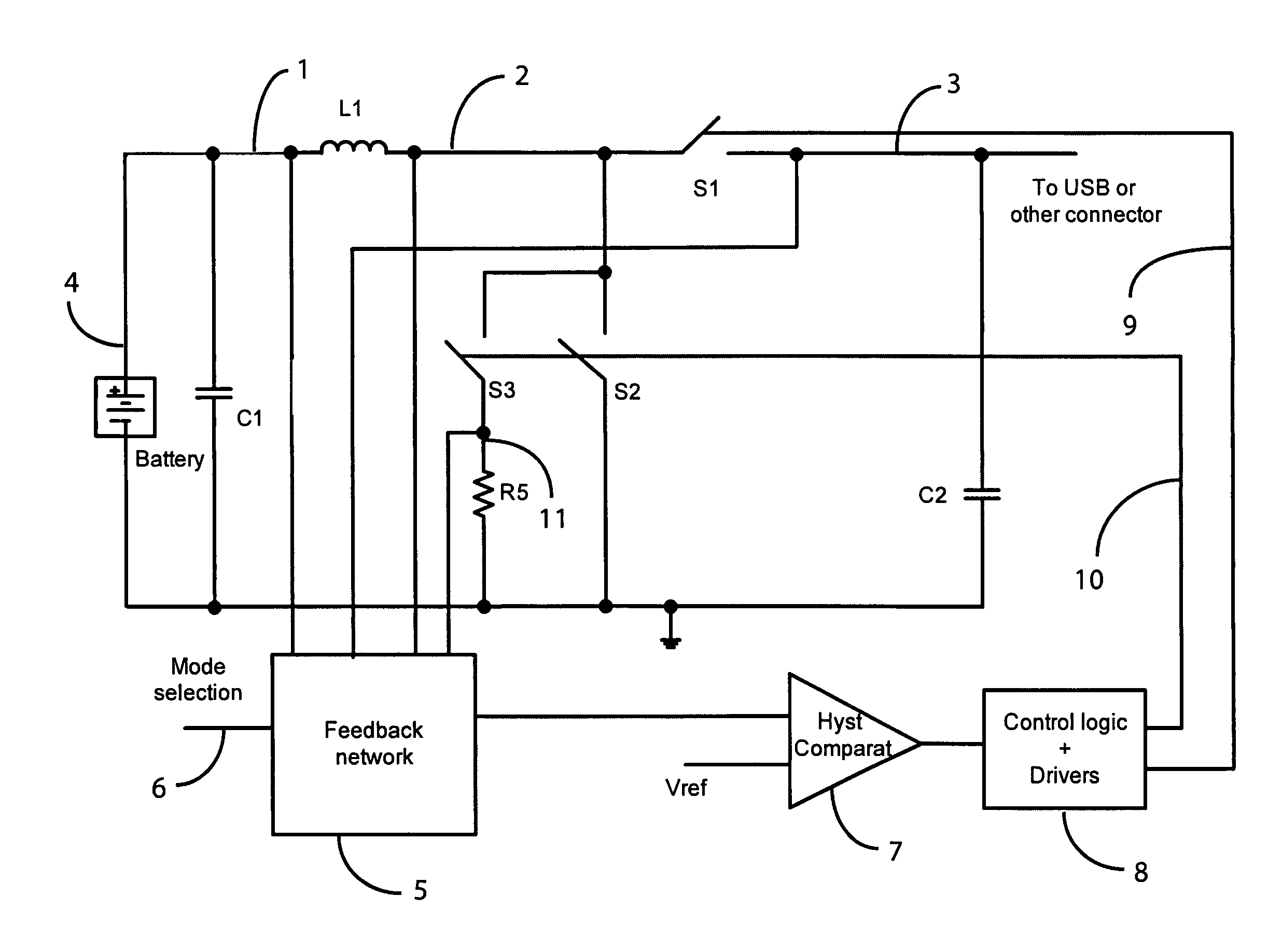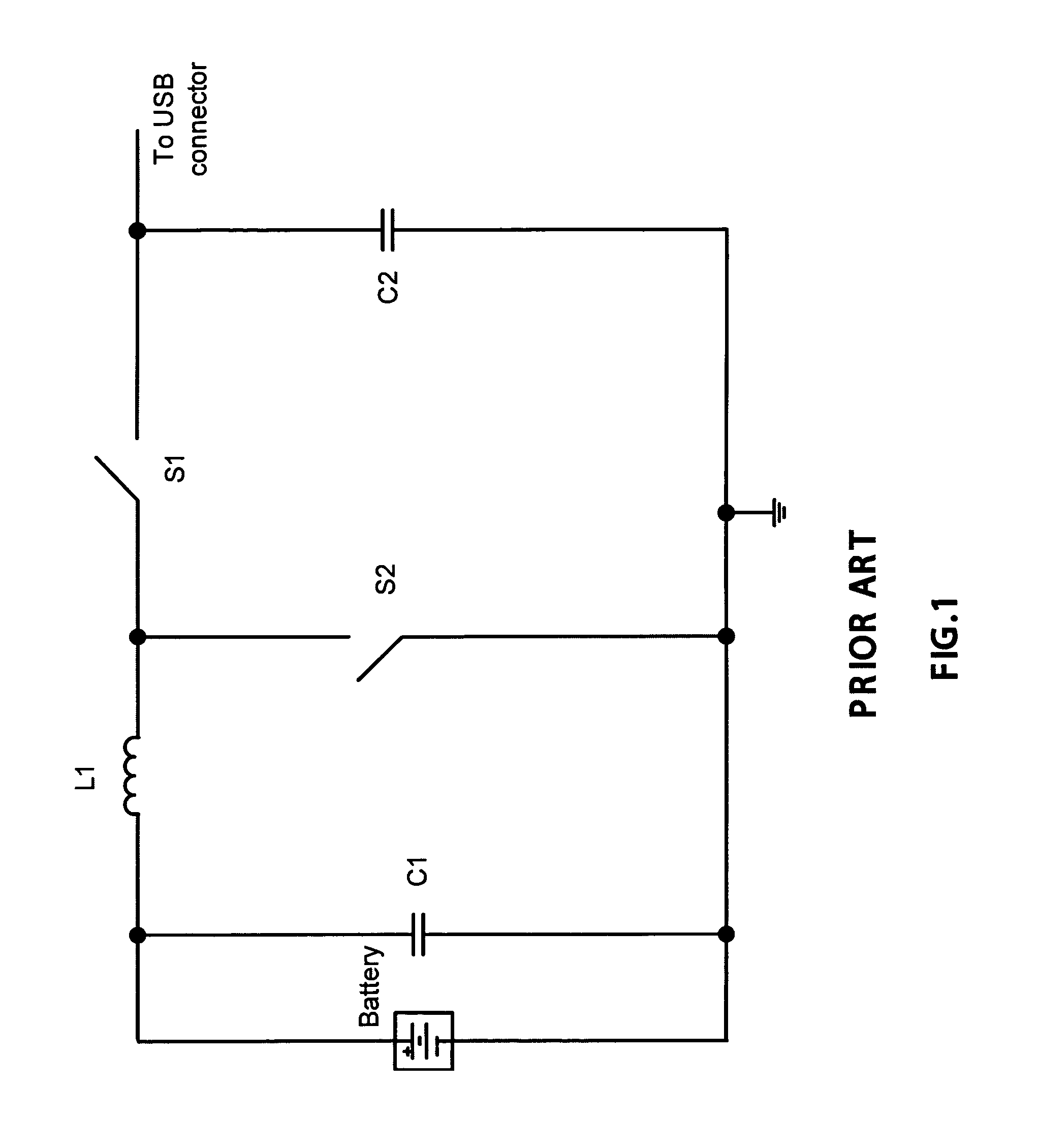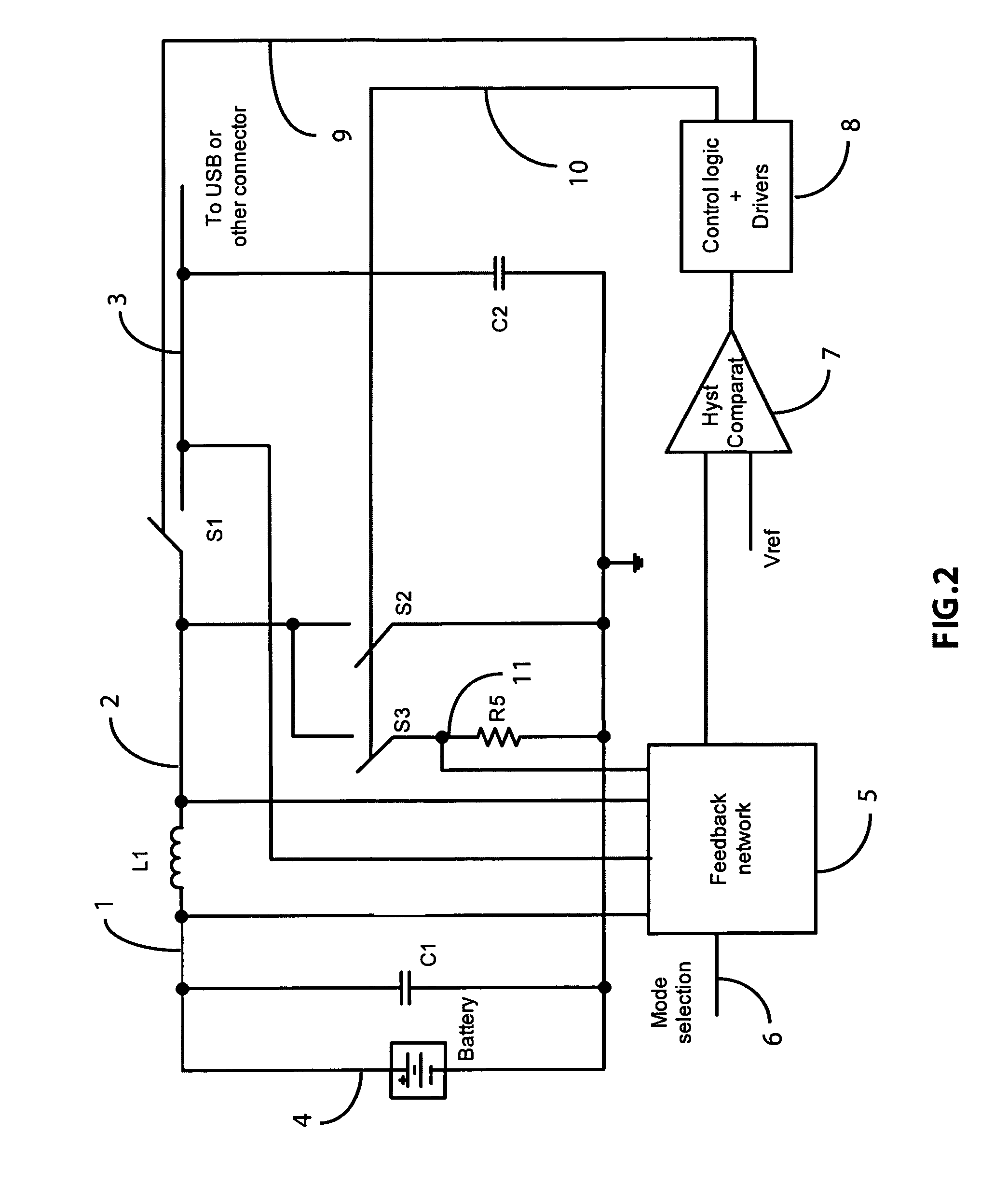Bidirectional hysteretic power converter
a power converter and hysteretic technology, applied in the direction of electric variable regulation, process and machine control, instruments, etc., can solve the problems of buck converter control quite different from the control of buck converter, rhpz can complicate the stability of the loop, and the overall response of the boost converter is quite slow, so as to reduce the value, size and cost of its passive components
- Summary
- Abstract
- Description
- Claims
- Application Information
AI Technical Summary
Benefits of technology
Problems solved by technology
Method used
Image
Examples
Embodiment Construction
A FIG. 2
[0059]The present invention, in the embodiment shown in FIG. 2, describes a bidirectional power converter that, when the current in the inductor L1 flows from left to right, that is from the node 1 to the node 2, operates as a boost regulating the voltage at the node 3 to be higher than the voltage of the battery 4 on the left side of the schematic. When the current in the inductor L1 flows from right to left, that is from the node 2 to the node 1, the converter operates as a buck regulating the current or the voltage of the battery starting from a higher voltage at the node 3.
[0060]The switch S1 represents the high side power transistor, and generally is switched in opposition of phase with respect to the switch S2 that represents the low side power transistor. The switch S3 operates substantially in phase with the switch S2 and its main purpose is to sense the voltage of the switching node 2 when the low side is turned on and to report it to the positive terminal of the re...
PUM
 Login to View More
Login to View More Abstract
Description
Claims
Application Information
 Login to View More
Login to View More - R&D
- Intellectual Property
- Life Sciences
- Materials
- Tech Scout
- Unparalleled Data Quality
- Higher Quality Content
- 60% Fewer Hallucinations
Browse by: Latest US Patents, China's latest patents, Technical Efficacy Thesaurus, Application Domain, Technology Topic, Popular Technical Reports.
© 2025 PatSnap. All rights reserved.Legal|Privacy policy|Modern Slavery Act Transparency Statement|Sitemap|About US| Contact US: help@patsnap.com



